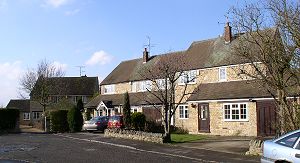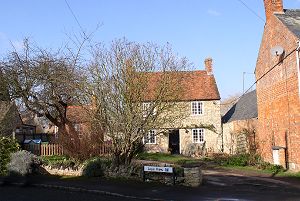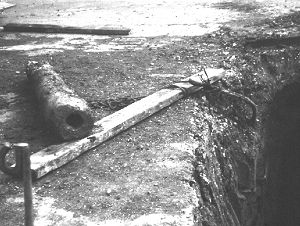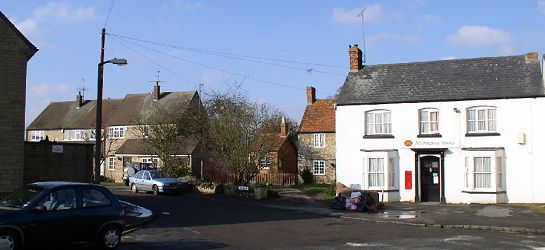This small estate of 6 dwellings, two semi-detached houses, two detached houses and two bungalows, was built on part of the meadows called "The Leys" adjacent to Water Lane Farm land, and owned at various times by the Rose and West families. The houses at the far west end of the estate enjoy views across the rest of the Leys (water meadows) and the Ouse Valley. They have a very pastoral outlook as the meadows have been kept as grazing for sheep, horses and cattle. The two bungalows were built by 'Cobbold Construction', who then sold on the rest of the land to be developed for four houses. The block of flats on the High Street were built for the district council at approximately the same time, and this whole construction constituted a major development in Sherington at this time, in the mid 1970s. |
 |
 |
Within living memory the site was owned by Henry George Rose, who had a wood yard there. He used to convert timber in the round to usable boards by means of a saw-pit. Top dog and under dog. He was also a supplier of locally made coffins and served most families in Sherington. Up until 199??? Charlie West, the last member of the West family to live in Sherington, lived in the small cottage at the entrance to Leys View called "Rose Cottage", seen in the photo on the left. |
This cottage had been in the West family for several generations along with the land surrounding it. They had used the land as a smallholding with an orchard, chickens and growing vegetables.Also old Mr West, Charlie's father, worked for Oldhams mineral water (just a few yards away on the opposite side of the High Street) as a carter delivering bottles of lemonade and ginger beer, in the late 1920s and early 30s, with Charlie as his boy, delivering to places as far away as Bedford, starting at 4-30am. Some feat by horse and cart. The small brick and tile building in the garden of Rose Cottage has been used at various times as an office for the various businesses, the wood yard and funeral service and probably known mostly as a booking office for the local bus and coach companies, but that role has also long ago ceased. | |
When the excavations were being done by 'Geoff Prince Constructions' to lay the services into the Leys estate several old elm water pipes were dug up, still in a good state of preservation even though they had been in the ground for more than 200 years and being disused for many, many years. Elm wood has this characteristic of being able to survive without rotting away if kept wet and not exposed to air pollution. These elm water pipes came directly across the High Street, most probably from the spring in what is now the recreation area, where there was also a windmill. The water fed the cluster of cottages that were at the south side of Water Lane, straight across the Leys. The pipes were joined by a spigot and iron clamp method and buried in clay. There is also another water pipe running from a spring in Bancroft field that still supplies water to Manor farm cattle, Water Lane Farm and goes on to the rear of properties in the High Street. |  |
 The Post Office is also at the entrance to Leys View, although this shop is technically in the High Street. The P.O. looks just as it has for the last 100 years or so, having had its sign renewed in the late 1990s, to resemble the sign as it used to be at the turn of the 19th century. Nothing else had changed. | |